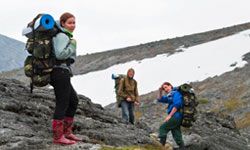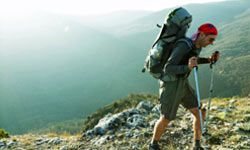It took Jeff Alt and his wife all of a few hours to realize that they hadn't brought along everything they needed to safely complete the 200-plus mile (322-plus kilometer) John Muir trail, which takes hikers through California's Sierra Nevada Mountains, from Yosemite Valley to the summit of Mount Whitney southeast of Fresno, the highest point in the lower 48 states [source: Peakbagger]. But it wasn't as though Alt, who is an expert hiker –- he's traversed the 2,180-mile Appalachian Trail solo and is the author of "A Walk for Sunshine" –- didn't get all the right things in his pack. Rather, after hiking 8 miles (12.87 kilometers) and ascending thousands of feet, it started to rain and Alt and his wife stopped to put on their parkas. "As I rifled through my pack, I realized our bag of clothes was missing," he recalls. Turns out, Alt and his wife had mistakenly left their clothes on a shuttle bus to the trailhead that morning.
Forging ahead was not an option. "You need all the right clothing in the high Sierra. The mountain range we were hiking could toss out snow, sleet, hail and rain unannounced," he says. The Alts spent the next day hiking to a bus stop and retrieving their clothes from lost and found before successfully continuing on their way. Alt and his wife were experts enough to not even consider going ahead without all the proper equipment and supplies, understanding that a long trek that takes you far away from civilization leaves very little room for error or omission. Which is why it's so essential to pack wisely and bring all of the absolutely necessary items. For his part, Alt prepares for long hikes -- meaning ones that have him on the trail for weeks or months -- methodically, taking months to physically train and weeks or even months to pack.
Advertisement
Long distance trekkers, as opposed to someone out for a day or overnight hike, have the special concern of making sure they don't bring so much gear as to make their trip miserable. Although on this count, equipment manufacturers have done a lot to help. "A main concern for the long-distance hiker is weight, which isn't always the case for the day hiker," says John McKinney, the former longtime hiking columnist for the Los Angeles Times and the author of 25 books. "Companies will design backpacking products with ounces, not pounds in mind. The advancements that have been made here are incredible."



